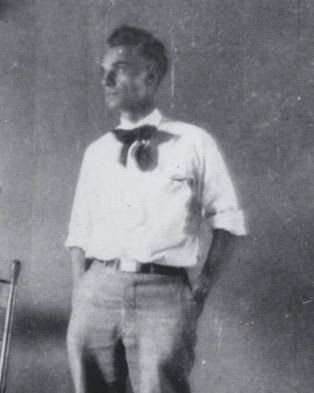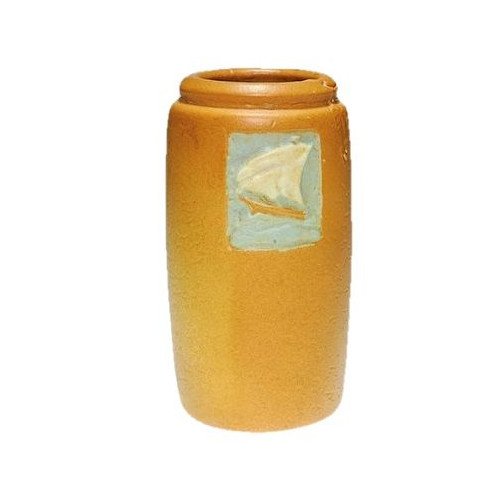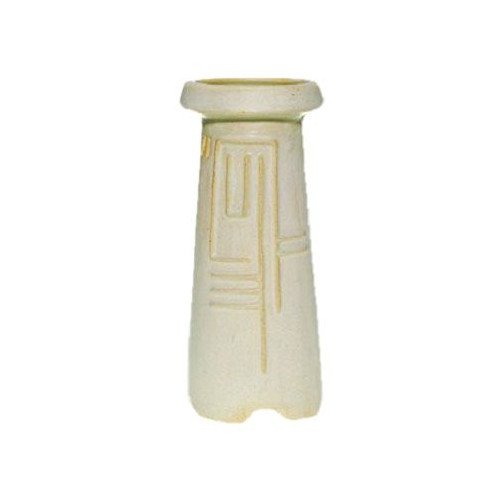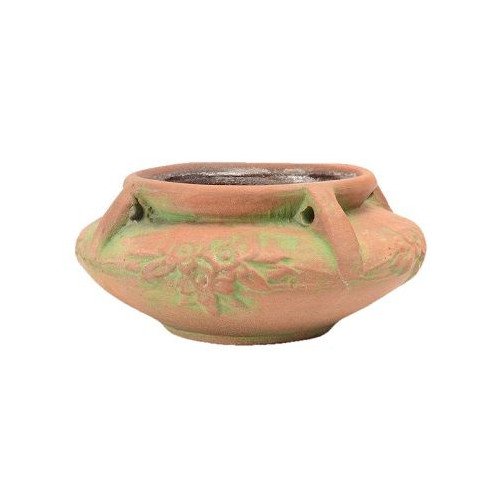
A Biography of Frank Ferrell (1878-1961)
In the last quarter of the 19th century, the American pottery movement exploded upon the scene, centered in Zanesville and Cincinnati, Ohio. Originally based upon simple and utilitarian designs, pottery companies began expanding their lines to include art pottery, generally notable for the artwork performed on the pieces, or for the novel glaze treatments. It was not until the dawn of the 20th Century that pottery companies began to explore the pottery from a sculpture perspective, as opposed to simply a blank slate to be painted upon. Leading this movement from behind the scenes was Frank L.D. Ferrell.
Frank Ferrell was born in Zanesville, Ohio, on May 22, 1878. It is believed that he began working at Weller Pottery around the age of 16 or so, in 1894. At the Weller Pottery Company he would perform under-slip decoration of pottery for the Louwelsa line. He left Weller in 1905.
Shortly thereafter, Frank went to the J.B.Owens Company, where he assisted them in producing the same basic pieces which he had previously decorated for Weller. His employment was short lived, and by 1908 he opened his first studio in Zanesville and called it Ferock Pottery.
His Ferock Pottery was thrown from clay from the North Dakota School of Mines, and it was here that he first experimented with sculpting pottery rather than just decorating established shapes. His pottery failed to become a commercial success, however, his unique designs caught the attention of Peters and Reed, an established commercial venture. In 1912, he began designing for Peters and Reed, where he created his first commercial art line, Moss Aztec.
The Moss Aztec line was very successful, and produced until 1926. The variety of designs and the deep sculpted details made it an instant hit. On selected pieces of Moss Aztec Ferrell's signature can be found, a practice frowned upon by potteries of the period.
By 1918 Frank had moved on to Roseville Pottery, where he would remain as art director for the rest of his career. The Roseville Pottery company had been quite successful under the direction of Frederick and Harry Rhead, however their styles tended towards European tastes. This allowed them to win many international awards, but by 1918 they saw the value of Arts and Crafts designs such as Moss Aztec. Frank Ferrell went to work immediately, creating the Sylvan line within a few months. From this point until 1952 every piece of Roseville pottery was designed by Frank Ferrell. Many consider his Art Deco work on the Futura line in 1928 to be his best work, and indeed they tend to be the most prized by collectors of vintage and antique art pottery.
By 1935 most of the art pottery companies were closing their doors and going bankrupt due to the great depression. Even Roseville pottery was not immune, and they were barely keeping their doors open. It was in this environment that Frank Ferrell created the highest selling line from any American pottery: the Pinecone line.
The Roseville Pottery Pinecone line was a phenomenal success, selling hundreds of thousands and saving the firm from certain failure. Today there are more collectors of Roseville pinecone than just about any other line.
Frank Ferrell died in Zanesville at the age of 83 on August 10, 1961. His legacy of pottery forms is in the many thousands, he inspired whole generations of potters, and he changed the industry forever. Although his signature rarely is seen on his work, the stamp of his creative genius shines on each and every piece.
-

Frank Ferrell
-

Weller Vase Decorated By Frank Ferrell
-

Aurelean Vase Decorated by Frank Ferrell
-

Ferrell Weller Etched Matte Bowl
-

Weller Etched Matt Bowl by Ferrell
-

Ferrell Owens Lotus Vase
-

Ferock Pottery Vase
-

Ferock Pottery vase
-

Ferock Pottery vase
-

Ferock Pottery vase
-

Ferock Pottery vase
-

Ferock Pottery vase
-

Moss Aztec Hanging Basket
-

Moss Aztec Bowl
If you have more questions, we are certain you will find the answers in the following books. Each of these books is highly recommended for collectors of Roseville Pottery. The owners of this website may receive compensation for qualified sales of the books.




